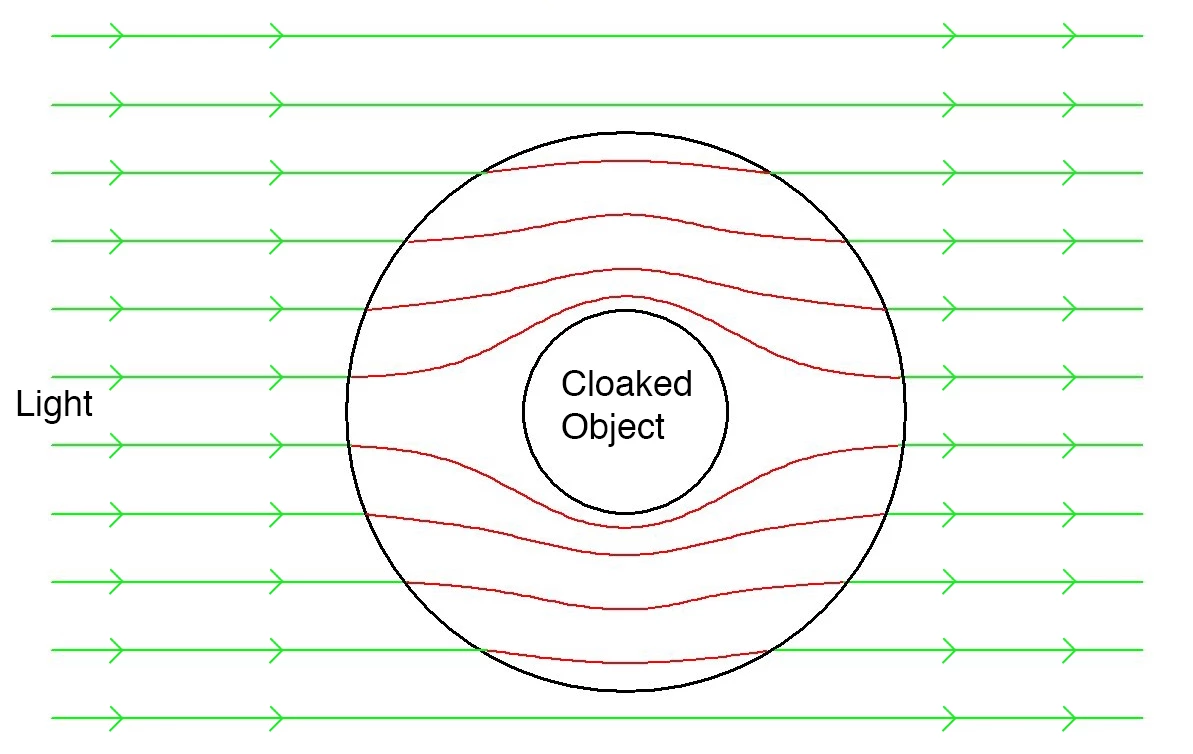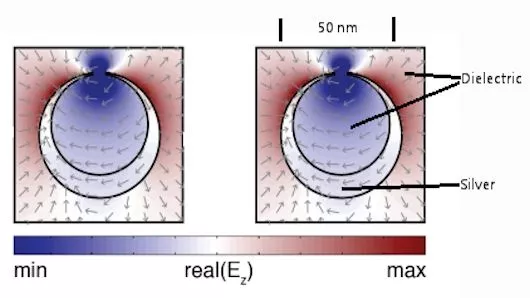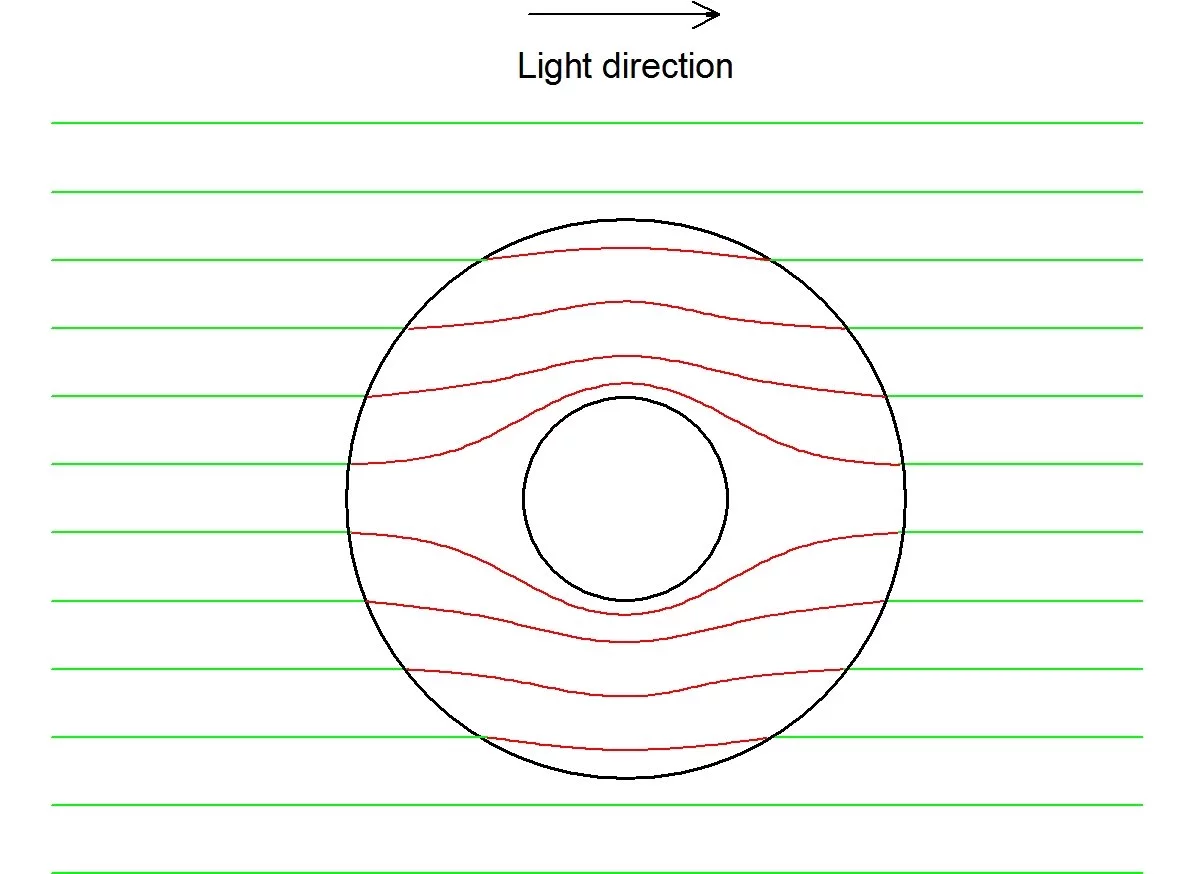To make a Harry Potter-style invisibility cloak requires the use of materials that have what's known as a negative refractive index over all optical wavelengths, from red to violet. However, the artificially-structured optical materials from which cloaks are made thus far have been restricted to a very narrow range of optical wavelengths, limiting their ability to cloak over a range of colors. That obstacle to progress looks to be at an end, as a group of optical engineers at Stanford has succeeded in designing a broadband metamaterial that exhibits a negative refractive index over nearly the entire rainbow.
The first invisibility cloaks, made at Duke University, worked by bending light around an object to be cloaked, as illustrated below. However, it is not quite this simple. The light exiting the cloak must also match the polarization and the phase of the light that travels past the cloak, or it will show a visible presence. You wouldn't know what was being cloaked, but you could tell there was a cloak.

To make an effective cloak over all optical wavelengths requires a remarkable level of control over the optical properties of the materials which make up the cloak. This control is supplied by optical metamaterials, which are (usually) periodic nanostructured materials, where the periodic cells are in essence tiny electromagnetic circuits that interact with both the electric and magnetic fields of light.
This is a trick that very few natural materials can accomplish. While previous attempts to create metamaterials have involved the creation of artificial "atoms" that are composed of one constituent that interacts with the electric field, and one that interacts with the magnetic field, the individual constituents interact with different colors of light, and it is typically difficult to make them overlap over a broad range of wavelengths.
As a result, their bandwidth, or the range of wavelengths over which they function, is typically quite limited. A cloak that only works for a particular color of yellow light would not be terribly useful, unless all you want to cloak is bananas.
Stanford Assistant Professor of Materials Science and Engineering Jennifer Dionne and her co-workers have designed a new type of metamaterial with a unified structure that allows it to efficiently interact with both the electric and magnetic fields of light over a broad range of colors. It was created using a design technique called conformal transformation, which involved "folding" a two-dimensional metamaterial with known properties into a three-dimensional nanoscale object shaped like a crescent moon that preserves those original optical properties.

The new Stanford metamaterial consists of a three-dimensional periodic array made up of three of these artificial nanocrescent atoms. When tuned for visible light, the material would exhibit a negative refractive index over a band from blue to red, only missing the very extremes of the visible spectrum. However, the researchers claim that a few tweaks to its structure would make this metamaterial useful across the entire visible spectrum.
The broad bandwidth of the new Stanford metamaterial suggests that this new class of materials will one day allow the fabrication of invisibility cloaks that are truly invisible, at least to the human eye. Beyond this, the extraordinary freedom to control light with metamaterials is likely to lead to hordes of applications never previously imagined.
The team's work was recently reported in Advanced Optical Materials.
Source: Stanford University










